And it is undeniable that the Cinquino has a lot of personality, but also an undeniable commercial success. Of the two million units sold since July 2007, the last half million have been sold in the last two years! Not bad for a car whose platform is not exactly up to date, and which endured without restyling until a timid update in 2014. Two years ago it received a few tweaks to bring it up to date, and Guille told you about it at the time.
Before us is a curious specimen, a 500 with S equipment, which is the sportiest thing there is without being an Abarth, and with a 95 hp diesel engine that arrived late last year (again). It goes against the grain, it's the only car in its category with a diesel engine - with the Panda's permission - and the only one with a choice of petrol, LPG, natural gas or diesel. There is an electric car, yes, but only in the United States, and it's sold by legal imperative; Fiat loses money on every one it sells.
Design
Fiat claimed to have changed 1,900 parts in the restyling, and there really are a lot of them, though the untrained eye won't notice the vast majority. The exterior dimensions are unchanged: 3.57 metres long, 1.63 metres wide and 1.49 metres tall, with a wheelbase of 2.3 metres. It is one of the most compact cars that can be found in the Spanish market, with the permission of the triplets of PSA/Toyota (C1, 108 and Aygo) and VAG (Up!, Mii, Citigo), although visually it seems even smaller.
Its design is very much conditioned by its heritage from the 1957 Nuova 500, one of the best homages to a classic car on the market. The bad thing about form-oriented designs is that they're not so good at function, and the 500 has a rather cramped trunk; we'll come back to that later. Believe it or not, it's a four-seater and the rear seats aren't exactly sparse.
The 2015 restyling was very respectful of the original design - the 2007 one, which in turn respects the 1957 one - with more or less subtle changes to the front bumper, the Fiat logo, the headlights - now with LED daytime running lights - the moustache with wider air intake or the lower grille with three-dimensional touches. The xenon projectors are optional, but highly recommended for those who regularly drive at night. In addition, the S version is distinguished by some aerodynamic appendages more reshulones, which stick very well with the exotic green Alpi Mate color of this unit.
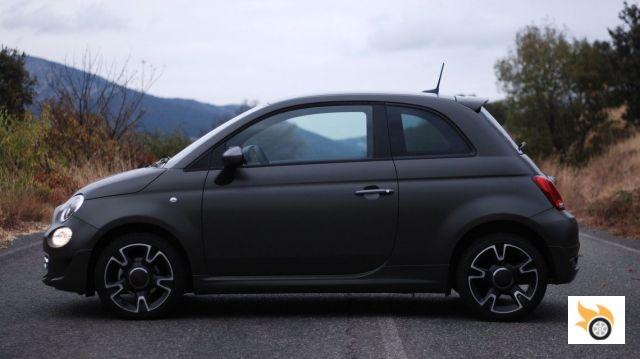
One of the strengths of the Fiat 500 is its cute character and what that implies at levels of customization, with a very rich range of exterior colors (22 if I have not lost count between metallic, tricapas and pastels), the possibility of vinyl it in origin -Second Skin- and some freedom of rims and other ornaments. This car would fit like a glove some military insignia, Sarge from Cars would give it a "I like it" with stars and stripes.
This unit has the 16-inch wheels associated with the S finish, which the increasingly common contrast of two colors is joined by the red of the "500" of the central cover that matches another similar logo on the dashboard. The S trim is also distinguished by the side skirts, the prominent rear spoiler and the specific details of the rear bumper. As on all new 500s, the rear lights have been left hollow, relocating the fog lights, reflectors and reverse gear to a lower strip.
The rear brakes are drum brakes in almost all the range, except in the TwinAir of 105 hp.
There is the possibility of putting a panoramic sunroof, although it must be considered that reduces headroom and is not the most advisable for tall people. No element identifies it by its engine, so at a rally it will go unnoticed as an oil tanker until you turn on the ignition. Finally, the exhaust output is real, you can look over his shoulder to cars that double and triple in price.
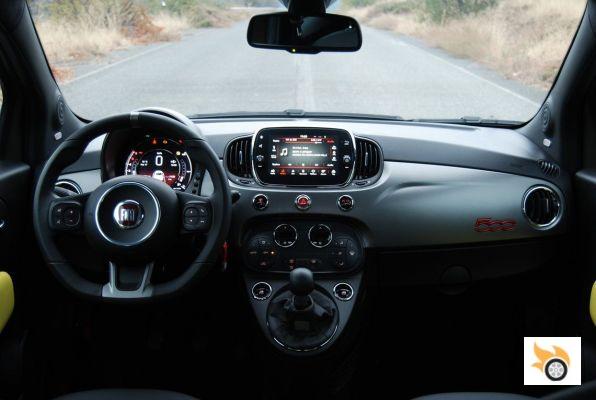
Cabin
Although the obvious inspiration of this car is that of a 50's utility car, it has several nods to modernity as the 100% digital Magneti Marelli instrument display, which comes standard on this finish and is optional on the lower ones. If it had better readability in some sun incidence conditions, I'd find it superb. This screen was already new in 2014. The lower models have the same classic instrumentation as standard, the digital one imitates it as best it can. The steering wheel, of new design, is specific to the 500 S, anyway it always comes with controls, no matter the finish.
On the other hand, it also highlights the 7″ touchscreen Uconnect system, which in lower versions is 5″, has a simpler visual appearance and is not tactile. It is properly integrated into the retro design, placed in an ideal position so as not to distract the driver (elevated) and without forcing the shape of the air vents. Too bad it's not compatible at this point with either Android Auto or CarPlay, but it does have support for Deezer, Twitter, Facebook, Tunein and little else. It's quite intuitive to use, although I've occasionally had to move my back away from the seat to operate it comfortably and there's no CD player (and yes, I still find it useful). The TomTom navigator, with its Live function, can get us out of more than one traffic jam.
In its favour, an effort has been made to soundproof the 500, and it is now more comfortable on long journeys. On the downside, the location of some controls, such as those that regulate the inclination of the headlights or electric windows.
Four people can travel inside the 500 with an average height, understanding as such 1.75 meters, from there you start to go a little boxed in the back, but in front you can be taller. The most observant will have seen that the design of the headrests is a little different, is more padded and better protects the back of the neck in case of rear reach. The rear ones can be folded down when not needed, so they are less of a hindrance to rear visibility. The quality is the usual in the A-segment, there are hardly any soft surfaces, but the 500 can opt for upholstery that its opponents can only dream of, such as Pelle Frau.
There are also some practical changes. The glovebox on the left disappears, but on the right it gains a full lid (before it was partially covered and small). Also disappears the folding box in the central column, now has a hole with a net that is enough for a pack of cigarettes or similar. Under the gearbox, already on the floor, has two cup holders with rubbery bottom (two more in the back), a specific hole for mobile phones (avoids that it comes out to make fists in the curves), a USB socket, a cigarette lighter and the 3.5 mm auxiliary plug. This unit has the optional Beats sound system, 440 various RMS in exchange for 400 euros, and gives better results than its equivalent Fiat 500X, oddly enough.
Of all the possible upholsteries, this one has an interesting black/yellow tone that I don't see as a good match for the military green exterior.
As for the boot, it can barely fit a cabin suitcase and a medium-sized suitcase, or four textile backpacks. For regular or holiday use it is adequate for a couple, both to store a weekly shopping and to put a couple of suitcases of reasonable size. For four people there are indeed better options on the market, in this size it's all there is.
When the tailgate is lowered, as it is very light, it can give the impression of less solidity and that it closes violently. On the other hand, you have to watch the opening, because sometimes the rear tray is in a raised position and hinders visibility, you have to get out of the car and place it by hand. In the basic versions the rear backrest is not split, and not only one rear seat can be folded down, but both.
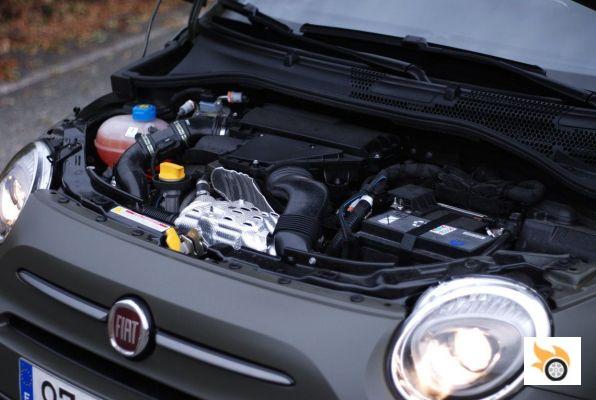
Technology
The legendary 1.3 MultiJet, with 1,248 cubic centimetres, is still the smallest diesel on the market after the withdrawal of the smart diesels and the Korean 1.1 CRDi. It's very difficult to justify a diesel in the A-segment, but in this case I feel obliged to do so. It advertises a fuel consumption of 3.4 l/100 km, one of the lowest in homologation, but in real conditions it also spends very little and without having to apply expert techniques in efficient driving. There is no "eco" or "Sport" button.
The umpteenth evolution of this engine delivers 95 hp of power and 200 Nm of maximum torque. It only has to move 1,020 kg, which is only five kilos more than its petrol rival, the twin-cylinder 0.9 TwinAir with 105 hp. The S version incorporates Stop&Start, which works well and is only a little slow when you want to get out of a traffic light. With respect to the first versions has optimized lubrication (less viscous oil, variable flow pump), internal friction, cooling (heat gains before) and diesel injection.
As for the car itself, has tweaks to the suspension whose nature does not clarify the dossier. According to Guille, the car is less bouncy than the previous model, although I can not swear it seems feasible. The S model doesn't have specific suspension tuning to be sportier or contain body movements more. The power steering seems to have improved, though the dossier doesn't mention that end; it still seems uninformative to me at times. This model isn't affected, but the 69bhp 1.2 now has larger brake discs on the front axle.
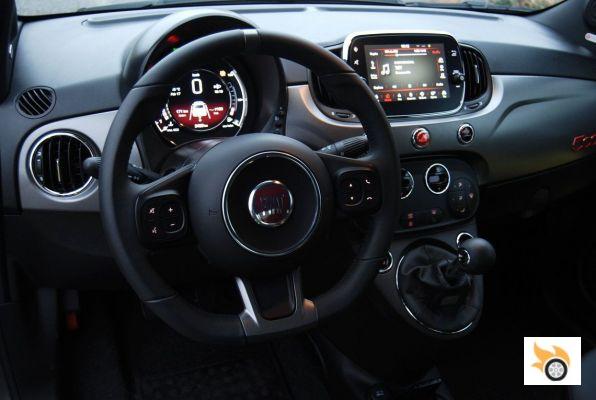
Driving
With this engine it's supposed to reach 60 mph in 10.7 seconds and a top speed of 180 mph. That's more than acceptable performance for a small car, indeed, it has a lively and hot character for a diesel, but as long as you keep the rev needle above 1,500 RPM. Below that it can't handle its soul, it vibrates more and makes the experience less enjoyable. Guille finds the diesel rough, but I can't share his opinion, especially compared to the twin-cylinder petrol. The two-cylinder is not a tartan, but it doesn't seem to me more balanced than a four-cylinder diesel.
The petrol, which I had to drive due to exceptional circumstances at the 2014 presentation at a very crazy pace even by Naples standards (I almost missed a plane), seemed very sensitive to use, which is totally normal for turbocharged petrols - and even more so if they're tight. I can't say the same about the petrol, consumption is much more stable and the car is less sensitive to the difference in driving style and whether or not it's loaded or not. Most of the mileage was done with four adults on board, at standard motorway speed, and I was pleasantly surprised by the fuel consumption.
In the first part of the test, it was a single occupant, with an average speed of 61 km/h - the usual in my test "circuit" - it declared a consumption of 4.1 l/100 km in the computer, which was adjusted to 4.6 l/100 km real. In those conditions it can do 760 km per tank, and it's very small, only 35 litres of which 5 correspond to the reserve. In a second part, a long trip with all seats occupied, 1,016 kilometers at an average of 82 km / h, a declared consumption of 3.6 l/100 km and a real record of 3.9 l/100 km!
In almost 1,500 kilometres the weighted average is 4.15 l/100 km (3.8 according to the computer), easily 2 l/100 km less than the petrol for only 1,500 euros more.
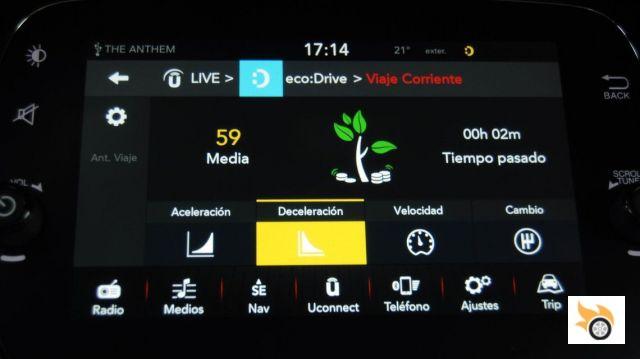
That's a lot of range, but I didn't try my best to get the lowest fuel consumption. On the other hand, as it is an engine that asks for joy, it made several rides above 3,000 RPM and I used to delay the changes compared to the typical diesel to avoid the low part of the tachometer where the accelerator does not pay any attention to our requests. Even if you drive it happily, its thirst is clearly inferior to the TwinAir. However, for those who want to save money, let's look at the LPG model, it's much cheaper and can beat the diesel in euros/kilometres, although its performance is more modest.
Everyone has their own opinion and their own ass, and mine says he prefers the petrol because it's more satisfying in general, especially for those who move around a lot, but want a cute car. The bad thing about the Fiat 500 is that it doesn't do well at high speeds because of its peculiar aerodynamics; according to the great Arturo de Andrés, it's "infamous", I'll never forget that comment out loud. It reminds me a lot of the first Mini One Diesel, a very lively lighter, at least when it went up to 90 hp.
It still doesn't have steering wheel depth adjustment, and the left footrest is a bit close.
It's a fun diesel if you use the five-speed gearbox properly, not so much if you listen to the gearshift indicator (GSI). It is one of those engines that appreciates double clutches and toe-tap reductions, and whose sound is not unpleasant -this is according to taste-. It's an agile car, it can overtake (80-120 km/h) in less than 8 seconds, and in the city it's as quick as a mouse. You just have to drive it with the same care as a naturally aspirated petrol, at low RPM there is hardly any torque. The gearshift lever allows you to get into gear quite quickly without the gears scraping, but be careful, it doesn't have a sixth gear, it has a reverse gear instead.
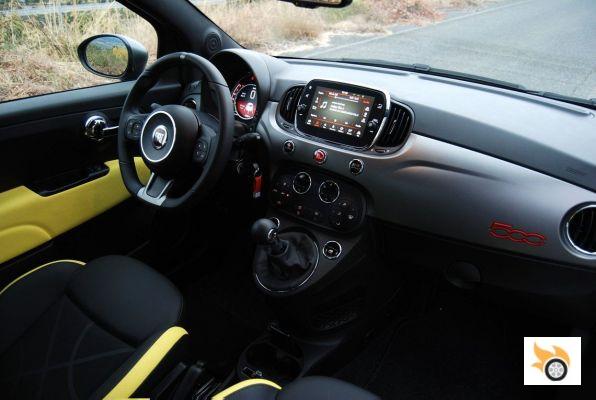
Compared to the first 500 diesel, with the 75 hp engine (Euro 5), this one runs faster and spends a little less, the optimisation is noticeable. It loves motorways, mountain passes and open roads. Using it a lot in the city, like any modern diesel, not only does it pollute, but it will end up causing problems; it is not made for very short journeys. On the other hand, it loves long distances and can be more economical than many hybrids and LPG models in its own segment (see the Panda itself) at the price of the black hose.
When the reserve comes in, 5 litres away from running out, it still shows autonomy, but shortly after it shows the two dreaded dashes "-" that are synonymous with not filling up the tank any more. Like all Fiat's for a long time, it has two on-board computers, A and B, both of which can be reset manually. The data can be viewed on the screen behind the steering wheel or on the Uconnect screen, in the latter case we can opt for a program that helps us to drive more efficiently because it evaluates the way we move.
The ESP can not be deactivated, nor is it necessary
Rivers of ink have already been written about the Fiat 500's behaviour. Very agile and reactive, a little delicate in support and fast cornering because of its rear axle, and with a certain tendency to lock the wheels in hard braking, as the emergency braking assistant jumps easily. It's a good performer in sporty driving, even though it's not a rocket, and it's king of the city. The ultra-assisted steering (CITY) doesn't seem essential to me, unless you want to park with the strength of your little finger. Normally it's a car that the driver likes a lot, even if it's the first time. If you allow me, I love it.
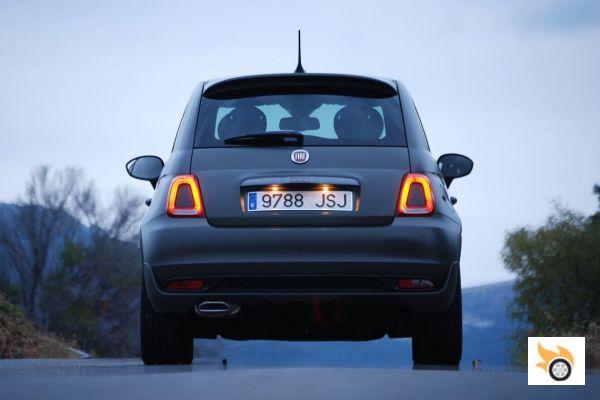
Conclusions
The numbers back it up, the Fiat 500 is still a fully valid model despite its "old" conception, and remains on its own merits the lord and master of the three-door A-segment. The next model will be more technological - this one lacks almost any modern driving aid - it will have more gadgets, it will be safer in the event of a collision... but it must be just as cute. If not, many of us will be disappointed - it's very hard to improve on something that's already at the top!
I could go on until the day after tomorrow explaining everything that the 500 range allows between finishes, leathers, colours, vinyls, equipment, the fact that it is convertible (500C)... and the same if I talk about the Mopar accessories. It's a car that was designed for more than just moving people, it was made to move people in style. It's not as casual as the Aygo or the Twingo, but it certainly has a lot of personality, and the customization options make it difficult to find another one of the two million and some like ours if we use our imagination.
I have it very clear: if I want a 500 with a gear, and that allows me to save in the long run, it has to be this one, the diesel. The twin-cylinder have never convinced me, and the 1.4 16v 100 hp 1.4 was discontinued some time ago; it was cool how it drove, but it went to more than 7 l/100 km. Thinking of a car for one or two, with no kids in sight, it's a sensible option if you're looking for a small car. There's a 500 for pretty much every need, from the rocky 69bhp 1.2 to the Abarth 695, and if that's not enough there are several derivatives - in name - like the 500X and 500L, but they're very different cars in terms of engineering.
Our insurance comparator reveals that for 20,000 km a year a 30 year old man living in Madrid, with 7 years experience without claims and with a private garage, can cover this car fully comprehensive from a premium of 405 euros a year with Qualitas Auto (no excess). With an excess of 200 euros the cheapest quality policy is offered by Regal, for another 200 euros. It is not, therefore, an expensive car to insure.

























